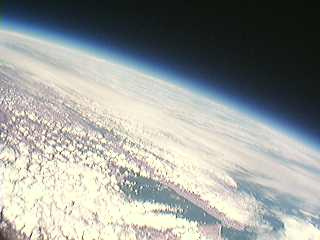Hadie High Altitude Balloon Project
 While listening to the Amateur Radio Newsline podcast this week, I was interested to hear that a group of hams from Ireland had launched a balloon which transmitted digital pictures back from the balloon while it was at altitude, using a version of dl-fldigi. While I was familiar with fldigi, I hadn’t heard of this version, so I did a bit of searching on the web.
While listening to the Amateur Radio Newsline podcast this week, I was interested to hear that a group of hams from Ireland had launched a balloon which transmitted digital pictures back from the balloon while it was at altitude, using a version of dl-fldigi. While I was familiar with fldigi, I hadn’t heard of this version, so I did a bit of searching on the web.
First of all, you can find details about the hadie high altitude balloon project here:
Hadie High Altitude Balloon Project
The flickr photostream from the most recent flight of hadie:4 can be found here:
Sadly, the balloon had a slower than predicted rise rate (2m/s instead of 3.5) and so overshot England after floating across the Irish Sea and landed in the North Sea. But it’s very cool that we got these live photos back.
Digging a bit more revealed this nice project web page which had many details about the hardware and software they used. They used a serial based camera module previously sold by Sparkfun (now apparently retired), an NTX2 module from Radiometrix which broadcasts on 434.075Mhz, and a cpu based upon the ATmega644P chip. The flight software appears to be written in C, and reads the data from a GPS and the camera module, and repackages it in a custom format called ssdv for transmission over 300/600/1200 baud 8 bit RTTY which can then be decoded by a custom version of fldigi known as dl-digi. Very neat. The radio module that they use has an output power of just 10mw, and yet was successfully decoded over distances greater than 500km. What’s kind of cool about this technique as opposed to (say) the analog Robot32 mode that ARISSAT-1 uses is that the image is broken up into packets, which are transmitted and received independently. The dl-fldigi can send any received packets to a central repository, and thus if any station successfully decodes a packet, then the image can be reconstructed (something that is difficult with analog SSTV).
I didn’t have much to add to this, I just wanted to stash this for later. While the images they got don’t really compare to some of the awesome HD footage that we are seeing shot with GoPro cameras, the immediacy of this seems very appealing, and it’s a good technical challenge.
I recall burning three or four weeks of a sabbatical getting Saccade.com on the air with Wordpress. So much tweaking…